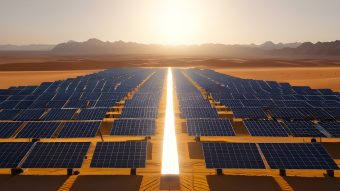
2023’s new solar installations would cover more than half of India’s annual electricity needs or more than Brazil’s entire consumption. Compared to Europe, the annual installations would exceed the total yearly electricity consumption of Sweden, Netherlands, Belgium, Finland, Czechia, Austria, Portugal, and Greece – combined.
SolarPower Europe’s annual Global Market Outlook for Solar Power 2024-2028 reveals growth rates not seen in over a decade, since 2010 when the global solar market was only four per cent of what it is today.
Solar continues to soar amongst its renewable colleagues, installing 78 per cent of the total renewable energy installed around the world in 2023. This is reflected in the IEA World Energy Investment (WEI) 2024 report, which demonstrates that investment in solar PV in 2023 surpasses all other energy sources combined.
“The world has truly entered its solar age. The sky is no longer the limit. How far solar can go will be determined by equitable global access to financing, and the political will to deliver flexible energy systems fit for the renewable reality”, said Walburga Hemetsberger, CEO of SolarPower Europe.
More:
- NEW ANALYSIS REVEALS EUROPEAN SOLAR BATTERY STORAGE MARKET INCREASED BY 94 PER CENT IN 2023
- INVESTMENT IN CLEAN ENERGY THIS YEAR IS SET TO BE TWICE THE AMOUNT GOING TO FOSSIL FUELS
- STOP SHOP IN ZAJEČAR TO HAVE A NEW SOLAR POWER PLANT
Looking to the future, the world is set to reach more than two TW of total solar capacity this year, having only reached the one TW level in 2022. However, between 2024 and 2028, year-on-year growth is expected to slow in the face of high interest rates, an energy crisis resolved – for now, and grids around the world struggling to keep up with renewable demand.
Michael Schmela, Director of Market Intelligence at SolarPower Europe said, “It’s all just a little bit of history repeating – the world revises its solar estimates upwards and we get a glimpse at the vast potential of solar. By 2028, we could be installing more than 1 TW of solar a year. It’s now about setting targets in line with reality, and addressing the familiar challenges – permitting, regulations enabling profitable business models, and the new frontier – system flexibility, through vast amounts of battery storage capacities. The sector is ready to deliver the decarbonised energy system, and policymakers must wake up to the climate and energy security solution on their doorsteps”, said Michael Schmela, Director of Market Intelligence at SolarPower Europe.
For now, it seems that China will determine the rate of global solar growth, though it continues to be one of the most dynamic, and difficult to predict, markets. In 2023 alone, China installed 57 per cenr of global capacity – 253 GW – equivalent to the levels installed globally in 2022. On the manufacturing side, a massive scale-up of capacity have led to solar panel price collapses of around 50 per cent last year, and a growing consolidation of the solar manufacturing industry in the country.
Source: SolarPower Europe

